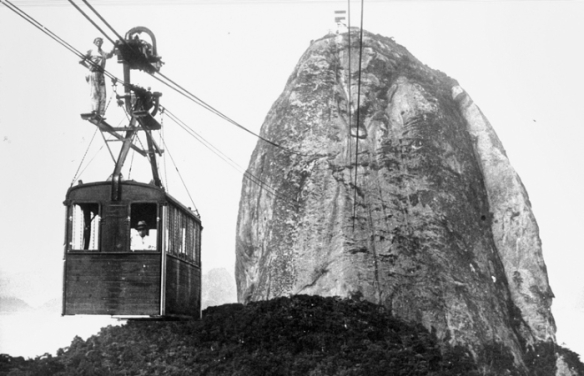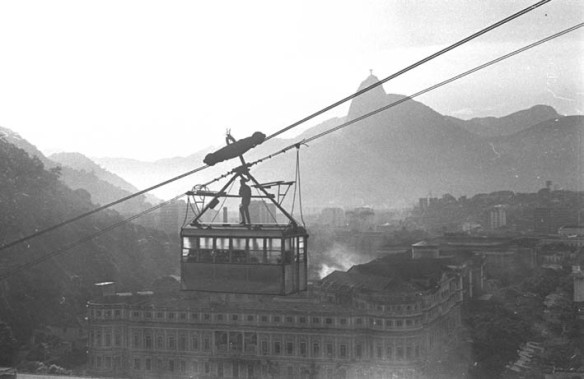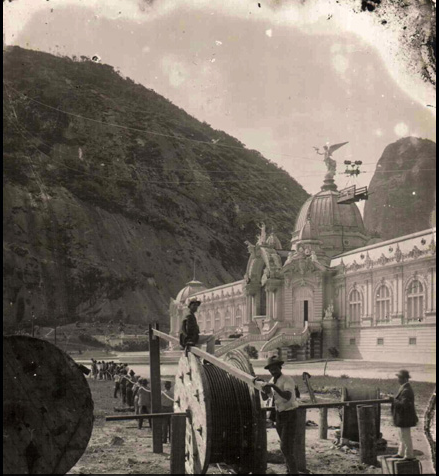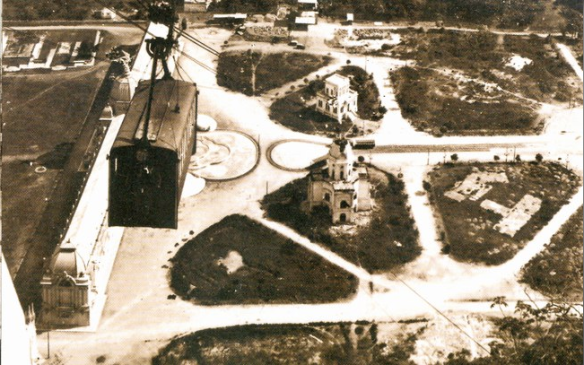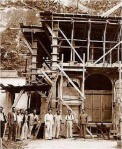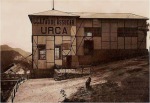(on top of the cable car is a maintenance man, doing repairs in motion)
Although the world’s first two cable car systems, one in Spain and the other in Switzerland, had just been opened, the idea of doing an aerial crossing in Rio emerged in 1908 during the centenary celebration of the opening of the ports to friendly nations. The concept came from the engineer Augusto Ferreira Ramos, who was the general coordinator of the event, to be held at Praia Vermelha. Another engineer, Antonio Manoel Galvao, joined up with him and took the idea to the mayor of the then-Federal District, Serzedelo Correia, who authorized the construction and operation of the cable cars in 1909. In principle, there would be three sections: one between Praia Vermelha and Morro da Urca, another from Morro da Urca to Sugar Loaf (this passage exists today), and the third, from Morro da Urca to Morro da Babilônia (but this section was never built, though it has been recently suggested as a future project). It was then that the Caminho Aéreo Pão de Açúcar Company was founded.
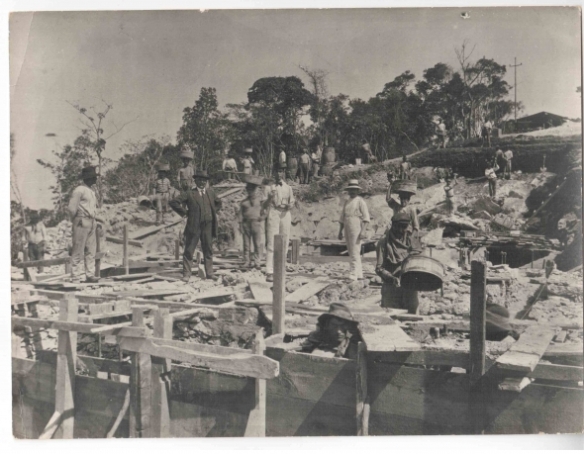 (construction on Morro da Urca, 1910)
(construction on Morro da Urca, 1910)
In 1910 construction began on the Praia Vermelha – Morro da Urca section. The cables were taken through the forested areas and via scaling the mountain. In fact, in the very beginning, more than 400 workers climbed the Urca and Sugarloaf mountains, each carrying parts needed to build the cable car stations at the top (some sites say it was actually only 100 workers-climbers). Once the cables were set in place, a small bondinho was used to bring supplies up and down the mountain.
By October 27, 1912, the first stretch was inaugurated. The cable car at the time was called Camarote Carril and was made entirely of wood, with capacity to carry only 24 people per trip (vs. 65 people/trip, today). The price per trip back then was equal to R$9 in today’s money (vs. R$62 now).
The opening of the crossing quieted the many naysayers and unbelievers who doubted that the project would ever work. The whole project was ridiculed from the start and it was even suggested that Augusto Ramos create a cable car whose destination was the Hospício Nacional, a well-known asylum at the time (where UFRJ is today).
The Morro da Urca – Sugarloaf section opened the following year, in January 1913.
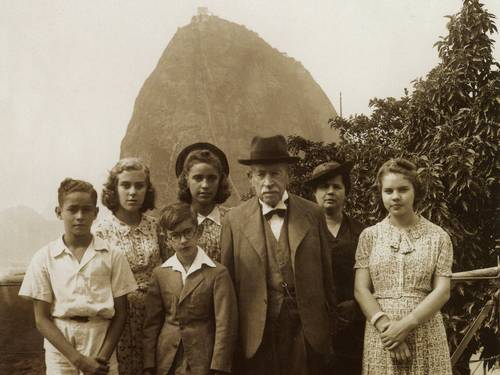 (in the middle, the man behind it all, Augusto Ferreira Ramos)
(in the middle, the man behind it all, Augusto Ferreira Ramos)

